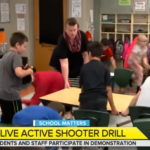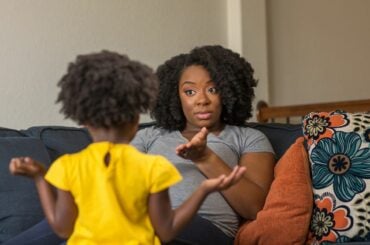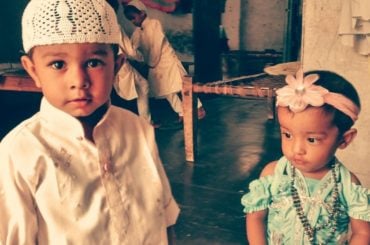A recent study published in the journal PLOS One shows that even though kids may share the same classroom, their experiences can be very different. In particular, their exposure to language had unexpected variation.
The study set out to learn if children in the same classroom are exposed to language differently. Unlike previous studies that mostly observed how teachers behave in the classroom, this study focused on the students’ perspective. Researchers asked 13 preschoolers ages three to four to wear a wireless video camera for a period of two hours in a single day. It turns out the duration and frequency of their interactions with both teachers and peers was quite different among the children.
Teachers are the primary source of language in the classroom.
When they played back the recordings they found that 60 percent of the interactions were with the class instructor, and the overall length of those interactions was almost three times longer than any exchanges the children had with their peers.
As a result, 92 percent of the complex sentences they heard came from teachers—but there was quite a bit of variation among the students. For example, in some cases when one child heard one word and complex sentence per minute from teachers, another heard five types of words and four complex sentences. That’s a big difference!
According to the study authors, as reported by Ohio State News, one reason may be that teachers often adapt their messaging to meet each individual child’s needs. But it’s also possible that each child’s own language ability and personality plays a role, says lead study author Leydi Johana Chaparro-Moreno.
For some kids, peers provide an additional source of speech exposure.
When researchers dug deeper into the recordings, they noticed six of the 13 kids interacted with peers almost as many times as they did with their teachers, and four others interacted for longer periods of time with their peers than their teachers.
In the end the study shows kids can have very different learning experiences within the same classroom and even with the same teacher and the same set of peers. And while a child’s interactions with their peers may be brief, and in most cases simpler than those with their teacher, they may help some students consume information more easily.
This research was groundbreaking in that it was conducted from the perspective of students. As any parent knows, children may not be listening to the same person at the same time or even in the same way at any given time. So, fluctuations in language (and perhaps other types of learning) are bound to happen.
This study is one part of a broader, $4.5 million project called Early Learning Ohio. It’s funded by the federal Institute of Education Sciences and the research will span five years. The researchers hope to identify those parts of the classroom experience that are most important to a child’s development. Scientists will use data from this study in particular in further research to examine social networking within the classroom and how children resolve conflicts with each other.







